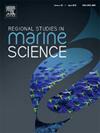How the commercialization of live bait impacts the profitability of artisanal fishing in a Brazilian estuary: A proximity economy approach
IF 2.1
4区 环境科学与生态学
Q3 ECOLOGY
引用次数: 0
Abstract
The economic viability of artisanal fishing practiced in the estuarine region of Santos, São Paulo, Brazil, was evaluated, considering the hypothesis that this activity could be more profitable for fishers, with the storage and maintenance of white shrimp Litopenaeus schmitti in tanks for sale as live bait for recreational fishing. Between August 2022 and July 2023, socioeconomic and fishing production data were obtained through interviews with 282 artisanal fishers. The initial investment costs, with and without the live bait maintenance system, were, respectively, US$ 4285.79 and US$ 3663.20, and the operational cost for a 12-month cycle were, respectively, US$ 25,798.80 ( ± 26.43 standard deviation) and US$ 25,583.02. Three scenarios were proposed, considering production 20 % higher (scenario A) and 20 % lower (scenario C) in relation to normal production conditions (scenario B). A sensitivity analysis was also carried out with four models related to the possibilities of selling shrimp for consumption and live bait. Annual gross income ranged from US$47,581.20 to US$52,635.60. All scenarios and modeling were viable as they showed investment recovery capacity and a return rate higher than the minimum attractiveness rate of 12 % year−1. The alternative system for maintaining shrimp in recirculation improved profitability, ensured more security, and enabled more fishers and families to be incorporated into supplying live bait, strengthening the activity and promoting economic and social improvements in the region.
求助全文
约1分钟内获得全文
求助全文
来源期刊

Regional Studies in Marine Science
Agricultural and Biological Sciences-Ecology, Evolution, Behavior and Systematics
CiteScore
3.90
自引率
4.80%
发文量
336
审稿时长
69 days
期刊介绍:
REGIONAL STUDIES IN MARINE SCIENCE will publish scientifically sound papers on regional aspects of maritime and marine resources in estuaries, coastal zones, continental shelf, the seas and oceans.
 求助内容:
求助内容: 应助结果提醒方式:
应助结果提醒方式:


